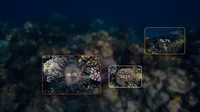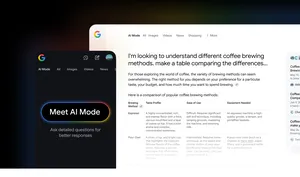Partnering with CSIRO to protect our reef, with help from AI

The Great Barrier Reef is the world’s biggest coral reef system, and is home to a rich and diverse ecosystem of marine life. This includes more than 600 species of coral.
Our precious reef is facing a number of very serious threats, including climate change, pollution, the impact of fishing – and a predatory species called the crown-of-thorns starfish (COTS). This species of starfish feeds on living coral, and outbreaks are devastating to the livelihood of the reef.
This is an issue of national and global importance, and is exactly the kind of challenge we are looking to help solve as part of Google’s Digital Future Initiative – a $1 billion investment in Australian infrastructure, research and partnerships.
As part of this initiative, we teamed up with CSIRO and the Kaggle data science community to develop a machine learning solution to analyse underwater images of the starfish species. This new AI technology has now been put to the test by researchers, in the southern Great Barrier Reef.
The early benefits of this technology was shared today on-stage at Google I/O 2022 – Google’s annual developer conference held in Mountain View, California:
While traditional reef surveys have been manual and time consuming, involving towing a diver behind a boat, AI technology can help analyse imagery and detect COTS more accurately and efficiently, via a live camera feed. This allows scientists to keep a closer and clearer watch of the reef, so outbreaks can be managed more effectively.
AI model detecting 6 crown-of-thorn starfish in underwater imagery
A aerial map of the reef showing where where crown-of-thorn-starfish have ben detected.
The CSIRO and Google team reviewing underwater imagery showing detection of crown-of-thorn-starfish by the AI model
We believe AI technology has the potential to help research into other environmental challenges around the world. So today, we’re announcing that we are open sourcing this AI model so that students, researchers and data scientists can build on this technology to preserve our environment for generations to come.
This project adds to the many ways Google AI is helping with environmental conservation in Australia – including WWF-Australia’s efforts to monitor wildlife in bushfire affected areas, and research into Dugong species by Murdoch University and the Queensland University of Technology.
In addition to these conservation efforts, through our Digital Future Initiative we will continue to partner with CSIRO to help address a range of issues, including energy and natural hazard management. This investment in partnership will bring the brightest minds together to make groundbreaking discoveries, develop new products – and help to propel the next wave of homegrown innovation.


